Yogis ahead of science: One nostril breathing determines how you feel
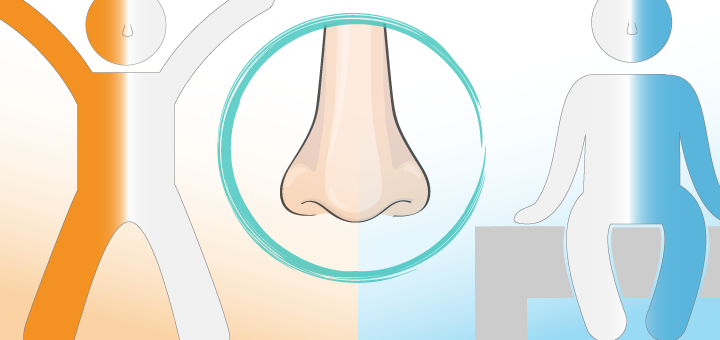
Have you ever heard of the “honeymoon nose”? The proper name for it is honeymoon rhinitis, and it reflects the phenomenon of your nose feeling congested after prolonged sexual stimulation. It turns out that your nose is lined up with the same kind of erectile tissue as your genitals, and those tissues become swollen when you get excited.
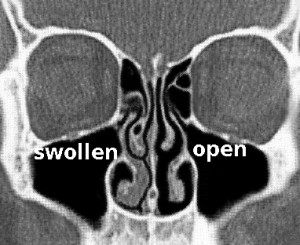 That is not the only time when those tissues in the nose get swollen. In fact, there is a predictable pattern of swelling and shrinkage that was first described (scientifically) by the German physician Richard Kayser in 1895. He had observed periodic cycles of congestion and decongestion that alternated between the right and left nostrils, which was later termed the “nasal cycle.” This phenomenon is widely known in the scientific community and has been subject to multiple studies. The funny thing is that yogis have known about it for hundreds of years and used it effectively to change the body’s temperature and one’s mental state, but we’ll get to that later.
That is not the only time when those tissues in the nose get swollen. In fact, there is a predictable pattern of swelling and shrinkage that was first described (scientifically) by the German physician Richard Kayser in 1895. He had observed periodic cycles of congestion and decongestion that alternated between the right and left nostrils, which was later termed the “nasal cycle.” This phenomenon is widely known in the scientific community and has been subject to multiple studies. The funny thing is that yogis have known about it for hundreds of years and used it effectively to change the body’s temperature and one’s mental state, but we’ll get to that later.
Here is what science has confirmed so far:
- At any given moment you are breathing through one dominant nostril; then some time later you switch to another one. This switch happens every 2-2.5 hours (although it can vary) and continues in a rhythmical fashion.
- This rhythm changes over time for most people.
- It seems to be controlled by the central nervous system.
- Swelling and shrinking seem to be related to sympathetic (SNS) and parasympathetic (PNS) nerves.
Most organs in the body (including cerebral hemispheres) are innervated by fibers from both SNS (fight-or-flight) and PNS (rest-and-digest). There are a bunch of those nerves in the nose, too. We have one set of nerves that covers the right side of the body and the right nostril and another one that covers the left side and the left nostril. What scientists are finding now is that those fibers have opposing effects. This means that at any given moment, you have sympathetic dominance on one side of the body (and breathe mostly through that nostril) and parasympathetic dominance on the other. Then, sometime later, they switch. This is called “lateralized ultradian rhythms of the ANS.” Basically, the nasal cycle is an indicator of the switch that happens between the SNS and PNS from one side to another.
Why does it matter? Well, multiple research studies show that your body functions differently based on which side of the body has sympathetic dominance. Here is what it looks like (I got the list from this article):
When the sympathetic system is dominant on the right side, and the parasympathetic system is dominant on the left, you get:
- Right nostril dominance
- Right lung dominant
- Generally a more active state
- Locomotor activity increased
- Heart rate increased
- Blood pressure increased
- Respiration rate increased
- Body temperature increased
- Cortisol increased
- Prolactin secretion reduces
- Testosterone increased
- Endorphins increased
When the sympathetic system is dominant on the left side and the parasympathetic system is dominant on the right, you get:
- Left nostril dominance
- Left lung dominant
- Generally a more resting state
- Locomotor activity decreased
- Heart rate reduced
- Blood pressure reduced
- Respiration rate reduced
- Body temperature reduced
- Cortisol reduced
- Prolactin secretion increased
- Testosterone reduced
- Endorphins reduced
Basically, in the course of the day, you alternate between more active and more restful states, which is confirmed by a widely accepted BRAC hypothesis (basic rest-activity cycle).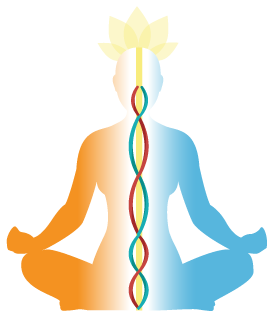
Yogis arrived at a similar discovery a while ago, though they have used different language to describe it. They said that our energy balance is affected by the flow of energy along three major channels: ida, pingala, and sushumna nadis. Ida (lunar channel) is cooling and has an overall feminine quality; it terminates at the left nostril. Pingala (solar channel) is heating and has an overall masculine quality; it terminates at the right nostril.
Breathing in through a nostril will emphasize the qualities of that channel; breathing out through the nostril will sedate the corresponding channel. This model is used widely in a therapeutic context.
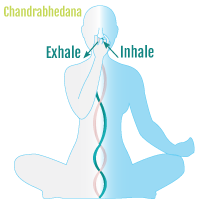
Sometimes there might be too much heat in the system (for example, if somebody has hot flashes or feels angry/irritable), which can be helped by breathing in through the left nostril (to stimulate the lunar channel) and out through the right (to sedate the solar channel). This pranayama practice is called Chandrabhedana.
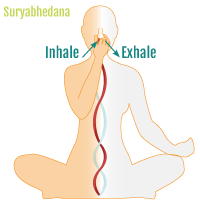
When there is not enough heat in the system (for example, cold limbs, low blood pressure, depression), it can help to breathe in through the right nostril (to stimulate the solar channel) and out through the left (to sedate the lunar channel). This pranayama practice is called Suryabhedana.
According to the yoga tradition, when the two sides are balanced, prana can enter the central channel – sushumna nadi – and travel upwards to the top of the head. Then, eternal bliss (samadhi) is achieved.
Another interesting fact: traditionally, when you breathe through one nostril or the other, you don’t leave it completely open, but rather valve it right next to the bony part of the nose so that the opening is narrowed and a sort of vibration is achieved. We have mentioned earlier that there are many nerve branches of the autonomic nervous system in the nose, so maybe valving the nose was meant to better stimulate the corresponding branch of the nervous system (SNS or PNS) and facilitate a more pronounced energetic effect? One wonders.
It certainly helps to make your breath cycle longer. You can try it for yourself, too. Next time you try one nostril breathing, try valving the nostril you are breathing through – it is a very different experience.
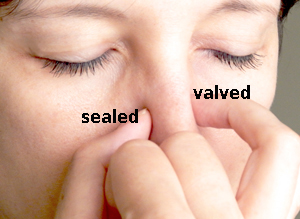

Scientists are saying that in the course of the day one hemisphere becomes dominant and then another in a rhythmical fashion and it switches back and forth, and it is directly linked to the nasal cycle.
SOME RESEARCH ON THE SUBJECT
List of research articles about the nasal cycle
Selective Unilateral Autonomic Activation: Implications for Psychiatry by D. S. Shannahoff-Khalsa
List of research articles about BRAC (Basic rest-activity cycle)

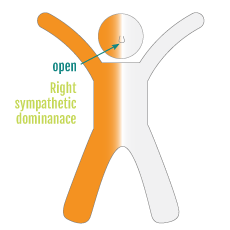



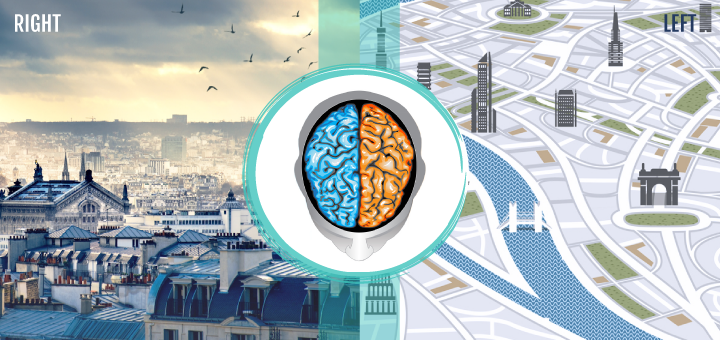





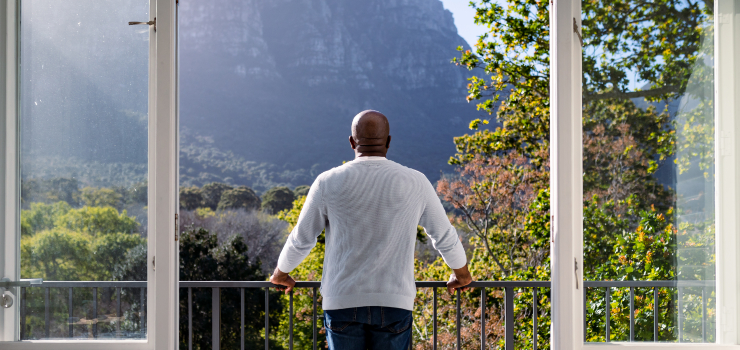
Brilliantly explained….. beautiful illustrations – thanks!!!
Thank you Marinda!
Thank you so much for such an informative article. I will be reposting for my students to see. Fantastic post.
Thank you Ame! Please spread the word 🙂
Wonderful website and just the kind of detail I have been seeking.
Thank you Margie, I am glad that you find it useful!
Hi! I really like your website, very well done! I learned a lot from this post and had to read the scientific article it was based on. I am a osteopathic family physician and I just completed session 2 of Viniyoga Foundations Program in Yogaville, VA December 2014 with Gary Kraftsow — or Kraftsowacharya as I like to call him! But your posts are so well done I use them to study with.
I just have one comment on this post. You might want to add/emphasize is something that’s also in the lists in the D. Shannahoff-Khalsa paper and that is when the right nostril is dominate there is “General sympathetic tonus” and when the left nostril is dominate there is “General parasympathetic tonus”. That means those conditions are systemic not just one half of the body. And thats born out by all the other findings you have listed i.e. heart rate, BP, etc. I think those lateralized findings aren’t as physiologically strong as the changes in generalized tonus can be. Otherwise you wouldn’t get much of a therapeutic response if you could only get the relaxation response on half of a persons body.
Thank you for your comment Charles – excellent point! I’ll need to think about how to work it into the post to make it more clear 🙂 And I never heard Gary called Kraftsowacharya before – brilliant! So happy to hear that you are doing the Foundations program – it certainly is a wealth of information (and inspiration – I miss that!)
could this be helpful with COPD?
Hi Ronald! Anybody should be able to utilize one nostril breathing, it all depends on what you are trying to accomplish. Specifically for COPD we usually recommend slow inhalation through both nostrils and “blow out the candle exhalation” (letting the air out through the mouth as if you were blowing out a candle).
Such an incredible article. I have had trouble with controlling my body temperature and it has had a massive effect on my life. This breathing technique has worked for me in the past but recently I took a knock to the nose which has resulted in a deviated septum. I am unable to breath through my left nostril and only my right, making my body temperature increase again. If you could suggest what steps I should take it would be most helpful.
The article itself is brilliant, my family finally understand why this has worked for me in the past :).
Hello, my father is right handed does that mean he’s right nostril dominant also? He has a hypertension 56 years old and he’s taking maintenance. He complaint to me recently that he had trouble with breathing he easily exhaust he said he’s only lack of exercise like walking exercise because he always use a car for work. Work and home only. What side of nostril breathing is the best for my father? Is the left nostril breathing helpful?
Good scientific stuff.
I would like to use your good pictures in my public lectures. I hope I can.
K K Deepak
Excellent article thank you so much.
A very interesting read . Thank you .
Dear Sir,
I am an indian,and has underwent various pranayama practices ,but recently i have noticed my left nostril is almost always open.only occasionally it closes and right nostril is 75% opens.At night i sleep on my left side ,still the dominant flow is by left only ,and i soon fast asleep i wake up at 3.00am i find my breathing in the left no matter by what practice i try to change the breathing, it flows by left and dominant.only occasionally the right side is 80% dominant.For the past 7 months i have severe constipation.i take tribhala( a Ayurveda herbal power).
I need your counsel on this and what I should do.
I have started practicing Nadishadana to even the breathing.I expect something from you.
Is it ominous in any way.
I am otherwise active ,hunger sleep normal.
Thank you.
Karthikeyan G
This is definitely not true. My vagus nerve has been disrupted for months now and my right nostril has been blocked, probably as a result. I don’t even feel the alternating nasal cycle as I previously did. Given that my left nostril has been the one that is open, I feel a full-on sympathetic response, not parasympathetic